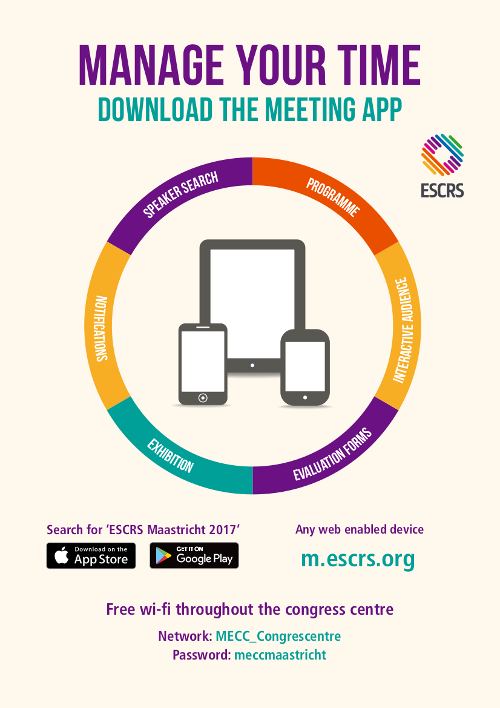Does dry eye affect reliability of corneal topography measurements?
(results will display both Free Papers & Poster)
Session Details
Session Title: Cornea
Session Date/Time: Friday 10/02/2017 | 08:30-10:00
Paper Time: 08:54
Venue: Brussels Room 0.4
First Author: A.Dogan TURKEY
Co Author(s): C. Gurdal
Abstract Details
Purpose:
The primary aim of the study was to assess the reliability of corneal topography measurements in dry eye patients and secondary aim was to evaluate whether there was a difference in corneal topography measurements between dry eye patients and controls.
Setting:
Diskapi Yildirim Beyazit Training and Research Hospital, Department of Ophthalmology, Ankara, Turkey
Methods:
Patients with diagnosis of dry eye disease were compared with control group. Patients with history of ocular disease and surgery were excluded. All patients underwent full ophthalmologic examination, evaluated by Scheimpflug corneal topography (Sirius, CSO, Italy). For each participant meibography and non invasive tear film analysis were achieved as well as cornea topography. Two images with at least 95% acquisition quality were used to assess the reliability of measurements. The intraclass coefficients (ICC) were analyzed within both groups. SPSS 20.0 was used for analysis.
Results:
Dry eye (group D, n=33) and control groups (Group C, n= 40) were similar regarding the age (39 (18-65) vs 30,5 (18-65) years, p=0.198) and gender distribution (M/F: 4/29 vs 8/32, p=0.366). Meibomian gland loss were higher (21% vs 15.1%, p<0.001) and NIBUT was lower (6.5 vs 17 second, p<0.001) significantly in Group D. ICCs were excellent (>0.95) for comparison of two images in terms of all parameters in both group D and C. Comparison in terms of topographic parameters ヨmainly including the central corneal thickness- revealed that dry eye patients and controls are not different topographically.
Conclusions:
Our study showed that repeated Scheimpflug corneal topographic measurements of the same patient in both dry eye group and controls are in agreement at an excellent degree. Secondly, there is no significant difference between dry eye patients and controls in terms of topographic features. These findings confirm that use of Scheimpflug corneal topographic is reliable for dry eye patients.
Financial Disclosure:
None



